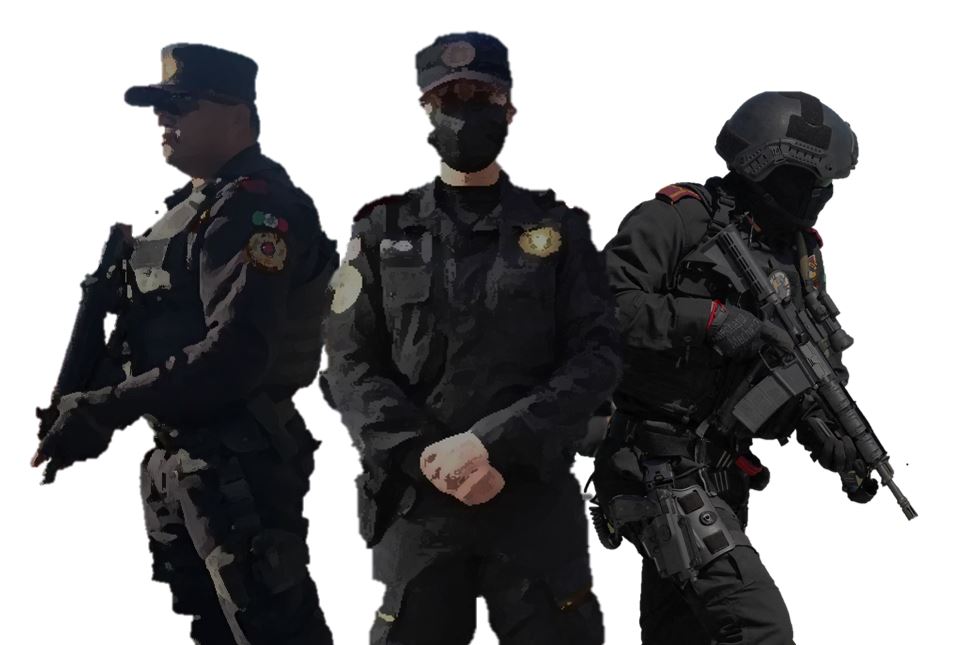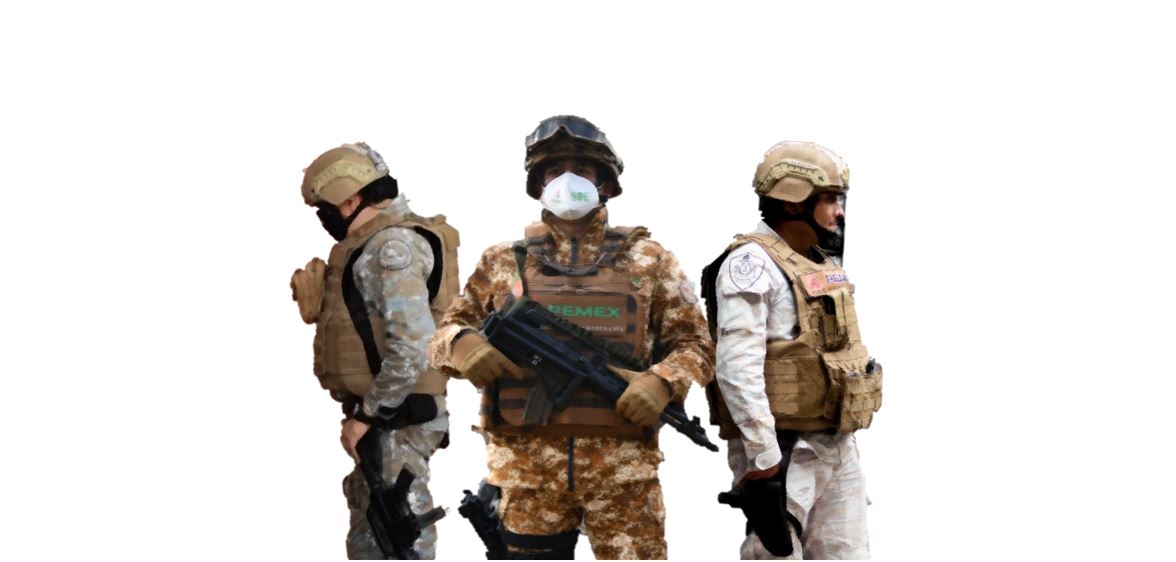What is Fuerza Civil?
May 13, 2024
by Alex Zaremba

The Civil Force is on paper a state police force, yet in reality it’s a paramilitary reaction force that is heavily armed and specifically equipped to deal with the narcos and create a bridge between federal and municipal forces.
Back at the start of the Narco War in Mexico, Nuevo Leon was considered one of the most dangerous states in Mexico, even though previously Nuevo León, was known for being peaceful and progressive, focused on its industrial growth, with working people and migrants coming to the state in search of work. Now it’s slowly regaining that reputation due to the government investing significantly to decrease the levels of insecurity and high-impact crimes. According to the government, as the best companies and largest factories move to Monterrey and the estate, security has become a main priority to continue to attract foreign investment. One of the main factors that have decreased crime, according to the government, is the Civil Force. The Force was created in 2011 to replace the State Police and with the primary objective of generating social order and creating a bridge between police forces (such as the municipal police) and the federal army and police, since during the height of the Narco War, the relationship between these completely collapsed and was stained a by illicit attitudes and actions on both sides.
Recruitment Shortfalls
The force currently has around 5,000 members but it’s designed to have 14,000. Recruitment shortfalls have triggered aggressive recruitment campaigns that have even led to a recruitment center in Mexico City. And while the force offers incredibly high salaries (compared to other states) there have been reports of high turnover rates yet it is not clear if it's due to their operational tempo, members having to live on bases rather than their homes, the increasing dangers of the job, or simply the fact that Monterrey has some of the highest paying jobs in Mexico and therefore many choose to try their luck in the civilian market. One source claims that only 32% of their members are locals while the rest came from different states, another factor that might lead to high turnover rates, as most migrants tend to eventually want to return to their home state with their families after fulfilling economic and professional goals.
One possible reason is how selective the force is, as its requirements tend to be 1.65 (usually in Mexico the limit is 1.60), to have a high school diploma (in Mexico middle school is usually enough to join a police or military force) and to pass rigorous control tests. One source claimed that out of 100 interested individuals only 30 applied, of which only two were approved, but none ended up recruited. For those that do make a selection, they must attend the University of Security Sciences of the State of Nuevo León where they can attain a degree, master's, or technical degree. And while the institute is called a university, it’s a six months (time unconfirmed) police/military boot camp.
To increase recruitment the force relaunched itself (in terms of marketing and equipment) as the best police in Mexico and acquired new weapons, armored vehicles, and helicopters. It also extended medical coverage, increased wages, offered credit counseling, scholarships, and performance bonuses, instituted housing support, and built daycare centers and childcare facilities for female police officers.
Organization and Capabilities
Civil Force brands itself as the best police in Mexico, and while it's too soon to tell, its equipment is certainly among the newest and it does offer some of the highest salaries and benefits for police officers in Mexico. As it is right now the force has positioned itself as the second most trusted militarized force after the Mexican army and even some states like Veracruz, Michoacan, and San Luis Potosi have since created similar forces.
One key aspect of these types of forces compared to estate police forces, is that they place a higher importance on analysis, investigation, and intelligence, coupled with militarized training, structure, and equipment led and modeled after the Mexican Secretary of National Defense. And while this has proved effective in Nuevo Leon the system has not always been equally as successful in other states. Why? Because Nuevo Leon has a very specific strategy tailored to its very specific security concerns, territory, culture (a culture where government projects are very effectively done jointly between the government, the private sector, and the citizens, something very difficult to achieve in other parts of Mexico), and most importantly its budget. So since Nuevo Leon is one of the richest states in Mexico it can comfortably allocate a significant amount of resources to salaries, training, and equipment, meanwhile other states can replicate the strategy but will never succeed if it’s not properly funded.
Capabilities and Organization

The force currently has:
- 1,200 patrol cars and trucks
- 70 Black Mambas tactical armored vehicles and GURKHA MPVs
- 9 helicopters (1 x Airbus BK117, 1 x Bell 407, 4 x Bell 206, 1 x Bell UH1H, 1 x Bell 412, 1x Blackhawk)
Operational units are organized as follows:
- Groupings – made up of three groups and led by a Chief Inspector or Inspector General
- Groups – made up of three companies and led by an Inspector
- Companies - made up of three sections and led by an officer
- Sections - made up of three platoons and led by a Non-commissioned officer (sub-officer)
- Platoons - made up of three squads and led by a Police Second Class
- Squads - made up of four police officers and their commander.
While little is known of their specialized units there have been mentions in OSINT of the following:
- Armored division
- Rural Police Force
- Close Protection Unit
- K9 Unit
- Air Unit
- Motorized division, (Division táctica motorizado, DTM)
SOF Units
- Fuerzas de Reacción de Alto Rendimiento Interestatal (FRARI)
- División de Acciones Tácticas (DAT)
- Grupo Operativo Ares (OPAR)
- Grupo Operativo Ares Colombia (OPAC)
Intelligence section
- analyst unit
- Investigation unit (cyber and field intelligence unit)
- counterintelligence unit
- Air intelligence division (UAV and IMINT division)
As for armament they have been authorized to get issued weaponry that is not usually allowed for Mexican police, like 7.62 caliber rifle. While no official list of inventory is public there have been images of their operators carrying the following:
- H&K G3
- IWI TAVOR
- IWI Negev light machinegun
- FN FAL
- H&K 416 (for air unit and SOF, not confirmed)
- Diferent versions of Galils
- Beretta ARX160
- M4 BUSHMASTER
- M4A1 CQBR
Usually, police forces in Mexico carry only 5.56mm assault rifles and semi-automatic 9mm submachine guns. It is rare for a police force in Mexico to be issued light machine guns or 7.62 caliber rifles.
Still Not Alone
While the force would ideally be in charge of removing the military of the state, they are very reliant on the army and national guard to fight the cartels, as they simply don’t currently have the manpower and firepower to do so. In metropolitan areas they are also reliant on municipal police forces, the unarmed Auxiliary Guard of Monterrey (GAM), and proximity police the Civil Guard. Of note, unlike the Civil Force, whose elements wear black uniforms and carry long weapons, Civil Guard police officers wear white shirts and discreet equipment and are used as crime deterrents rather than a direct reaction to it.
Copyright by Vigiles Analytica. All rights reserved. ©2025
